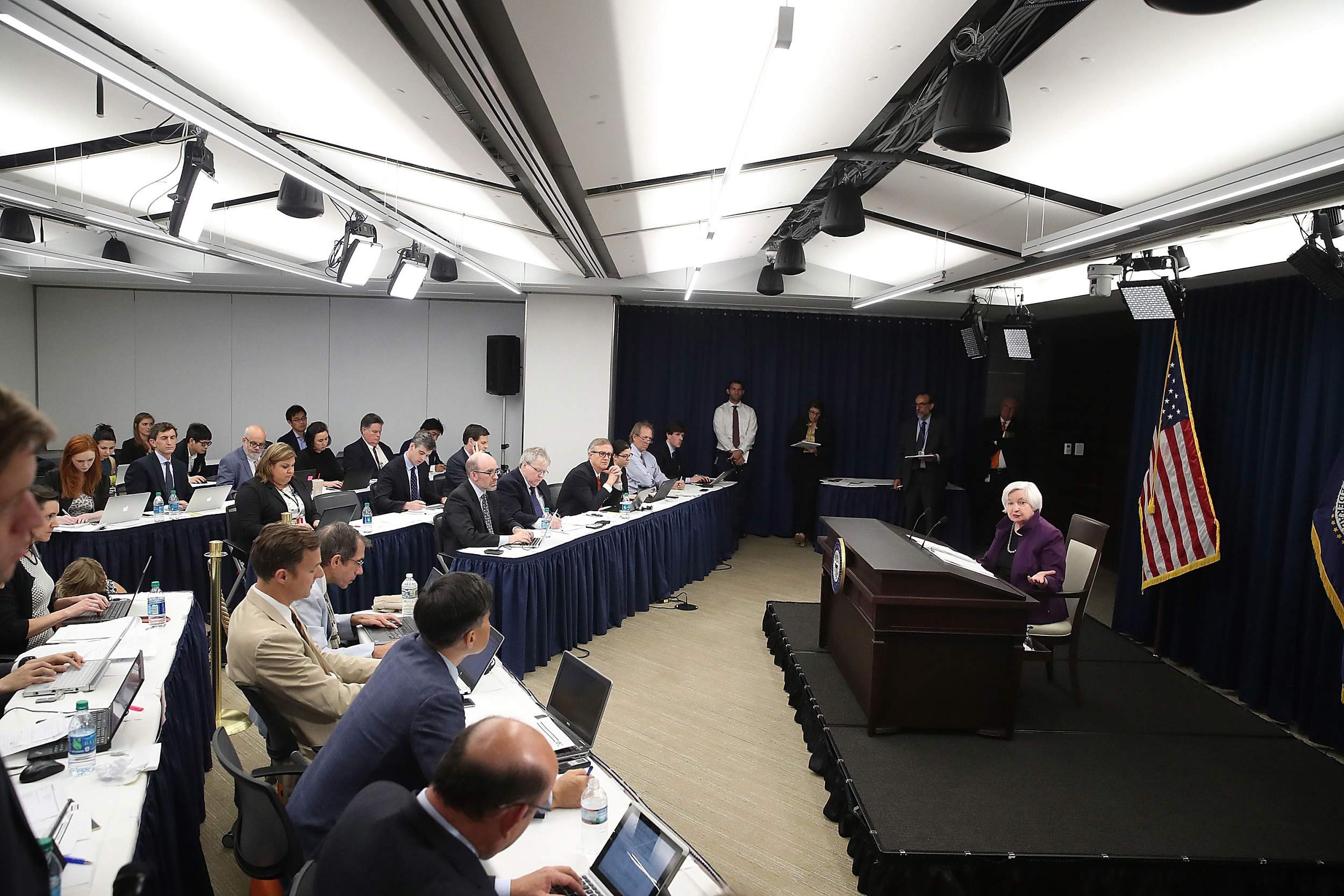The Federal Reserve raised interest rates on Wednesday for the second time in three months and said it would begin cutting its holdings of bonds and other securities this year, signaling its confidence in a growing US economy and strengthening job market.
In lifting its benchmark lending rate by a quarter percentage point to a target range of 1.00 percent to 1.25 percent and forecasting one more hike this year, the Fed seemed to largely brush off a recent run of mixed economic data.
The US central bank's rate-setting committee said the economy had continued to strengthen, job gains remained solid and indicated it viewed a recent softness in inflation as largely transitory.

Federal Reserve Board Chair Janet Yellen speaks during a news conference following a meeting of the Federal Open Market Committee June 14, 2017 in Washington. /VCG Photo
The Fed also gave a first clear outline on its plan to reduce its 4.2 trillion US dollar portfolio of Treasury bonds and mortgage-backed securities, most of which were purchased in the wake of the 2007-2009 financial crisis and recession.
It expects to begin the normalization of its balance sheet this year, gradually ramping up the pace. The plan, which would feature halting reinvestments of ever-larger amounts of maturing securities, did not specify the overall size of the reduction.
"What I can tell you is that we anticipate reducing reserve balances and our overall balance sheet to levels appreciably below those seen in recent years but larger than before the financial crisis," Fed Chair Janet Yellen said in a press conference following the release of the Fed's policy statement.
She added that the balance sheet normalization could be put into effect "relatively soon."
The initial cap for the reduction of the Fed's Treasuries holdings would be set at 6 billion US dollars per month, increasing by 6 billion US dollar increments every three months over a 12-month period until it reaches $30 billion per month.
For agency debt and mortgage-backed securities, the cap will be 4 billion US dollars per month initially, rising by 4 billion US dollars at quarterly intervals over a year until it reaches 20 billion US dollars per month.
US stocks edged lower and prices of US Treasuries pared gains after the Fed's policy statement. The dollar was largely flat against a basket of currencies after reversing earlier losses, while the price of gold fell.
(Source: Reuters)










